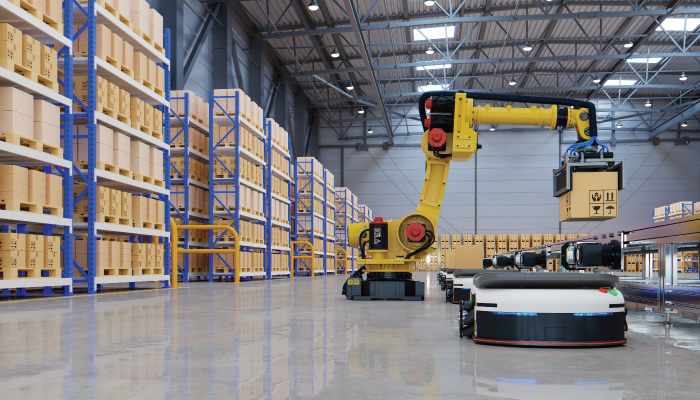“Companies that embrace automation are indeed more resilient in the face of change. Employees and employers alike realized how automation helps them not only weather storms like the pandemic, but to become overall more efficient and effective,” says Craig Stewart, CTO of SnapLogic in an exclusive interview with EnterpriseTalk.
ET Bureau: What has been the impact of COVID-19 on the economy and the core industries? How can automation mitigate the financial impact of COVID-19?
Craig Stewart: Now that we’re almost at the two year marker since the start of the pandemic, it’s easy to look back and see how COVID-19 impacted the economy. At first, there was a major halting of the economy worldwide for almost everyone. But as people learned how to work within the situation, it became clear just how much technology would be relied upon to get through the situation.
Also Read: How the CIO Role Will Evolve In 2022
As the research says: ‘the disruption to business and government triggered by the COVID-19 pandemic, as well as the dramatic shift to remote working for many organizations, has caused a stepchange in the importance of digital connectivity.’ Those that had more mature technology environments and access to automation fared better during the pandemic because of ‘…the possibility for corporations to switch sales to online markets, for employees to continue to work from remote locations, and for governments to make more effective decisions with quicker access to more accurate information.’
Put simply, automation helped to mitigate the impact for many companies, allowing them to continue to work effectively, bridging the immediacy of the shutdown to more evolved hybrid work models we see today.
ET Bureau: We could be tempted to believe that software-based companies and those with significant levels of automation in their processes are less vulnerable to the pandemic’s disruptive effects than the majority of other enterprises. Is this, in fact, the case – are companies that embrace automation more resilient and recover faster?
Craig Stewart: Companies that embrace automation are indeed more resilient in the face of change. One way that the report investigated this was to look at the GDP of nations vs. how automated they were, and the impact of the pandemic on their economies. They found that the U.K. could have prevented £10-14 billion of its 2020 GDP contraction if it had matched the automation level of a country like the U.S., and that the U.S. could have witnessed a $105-212 billion smaller GDP contraction had it entered the pandemic with the degree of automation similar to a country like Singapore.
Automation technologies allowed companies to focus their employees away from mundane, repetitive and time-consuming tasks, and really put their efforts behind activities that had a direct impact on the business’ ability to operate and succeed. Employees and employers alike realized (in both senses) how automation helps them not only weather storms like the pandemic, but to become overall more efficient and effective.
ET Bureau: New technology is increasingly being adopted by the global labor market. Automation and artificial intelligence are rapidly being used by businesses to transform workplaces, cut costs, and eliminate jobs, and more changes are on the way. What will be the impact of this on the workforce now that new technology adoption is becoming more mainstream?
Also Read: Enterprises Should Ensure Sustainability of AI Initiatives
Craig Stewart: The study by Cebr found that adoption of automation technologies both positively affected job growth – and worker productivity. U.S. companies adopting automation-related technologies saw an average annual increase in employment of 7%, equating to a total of 7.2 million jobs, within three months (compared to one year earlier). U.K. companies saw an average increase of 4%, estimated to amount to 676,000 jobs in total.
In the U.K., it was found that automation has the potential to increase productivity by 15% in the long-term, with notable benefits in industries such as transportation, healthcare, and social work. This translates into the potential to create up to 3.3 million additional jobs. If the same increase in productivity occurred in the U.S., it would support the creation of approximately 16 million jobs.
ET Bureau: Intelligent automation, NLP, machine learning, augmented analytics, and cloud adoption are all hot topics in data analytics right now. Can you discuss the new potential and challenges of meeting today’s business demands for agility, accessibility, and deeper analytical insights?
Craig Stewart: If the pandemic taught the global business community one thing, it was the need to plan for flexibility. It was quickly easy to see what companies were ready to adapt, and which had some real problems they needed to quickly overcome when the shutdowns started.
In addition to flexibility, the application of analytics to your business operations goes hand in hand with automation. Data is key. Gaining true insights into your business gives you the opportunity to become more efficient through automation, while also helping you get smarter about your customers and what it takes to attract and retain them. Think of analytics as being the tool that allows you to focus your internal and external improvements, and the key to enabling analytics is the automation of data.
ET Bureau: When it comes to the transformational impact of automation, can you tell us which industries are the most advanced in terms of automation adoption? Who, in your opinion, will reap the benefits of automation in the short term?
Craig Stewart: You’re correct in saying that automation is having and will continue to have a transformational effect on businesses worldwide. When we think about the next phase of automation, we think about areas of an organization where there are repeatable, time-intensive processes or tasks – and where, if you were able to free up that time, you’d be able to make a real difference in the lives and efficiency of employees.
What comes immediately to mind are departments such as Human Resources, Sales and Marketing. There are so many tasks in each that are considered mundane that they could be automated, saving everyone some time. Think of the advantages of automating the employee onboarding process – the forms and benefit details and sign-ups that can become draining for a highly skilled HR leader. Or the sales team members that must spend hours inputting lead data into a tracking database. Or the marketing team, who could save time by automating what materials are sent to prospects at different stages of the customer journey. And those are just a few of the possibilities. The correct way to think of automation is ‘how will it improve my business,’ not how can I shave costs off of the bottom line.
[vc_column][vc_tta_tour][vc_tta_section title=”Craig Stewart” tab_id=”1602598322051-0408cb00-0e1c”][vc_column_text]
Craig Stewart is the CTO at SnapLogic, where he is responsible for leading the company’s product strategy and launches, roadmap, and evangelism. Craig is an experienced manager of technical teams with many years of experience guiding the evolution of data and application integration technologies.
[/vc_column_text][/vc_tta_section][/vc_tta_tour][/vc_column]



























